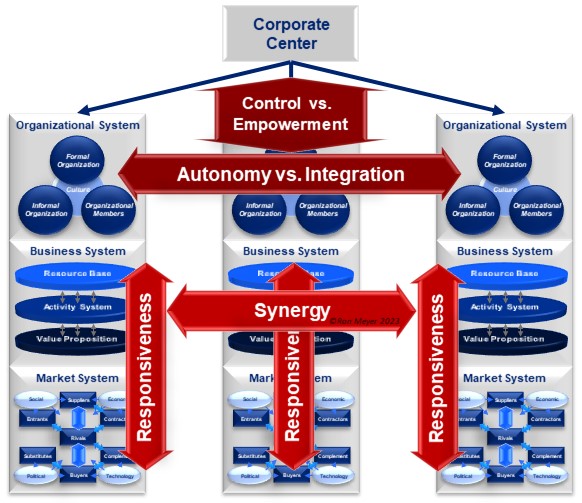When an organization operates in two or more lines of business, it needs a separate business level strategy for each business unit, choosing where to position itself in the market system (“where to play”), which model to use for its business system (“how to play”) and which model to use for its organization system (“who should play”). These three key business level strategy choices are described in the Strategic Alignment Model (Meyer’s Management Models #32).
But besides strategies for each of the business parts, multi-business organizations also need an overarching corporate level strategy for the whole. This is true for organizations with just a few business units, but equally for organizations with dozens or even hundreds of them.
The Corporate Strategy Framework outlines the four key choices when formulating a corporate level strategy. This framework builds on the business level strategy choices described in the Strategic Alignment Model, shown here as three gray vertical ‘silos’ (the market, business, and organizational system choices of each business unit). Only three lines of business are depicted here to keep it simple, but there can be many more. The key corporate level strategy choices are the red arrows, that come on top of the business level strategy choices. The light red arrows are business model choices, while the dark red arrows represent organizational model choices.

The four key choices that need to be made for a corporate level strategy are the following: